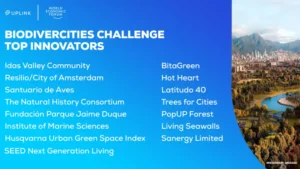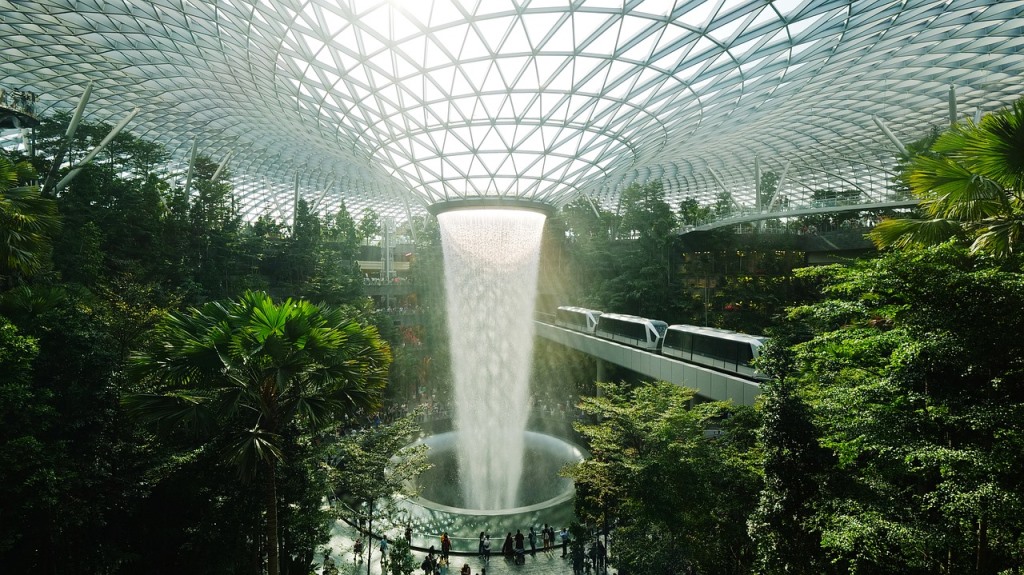We live in an urban era, by 2050 cities will host nearly 70% of humanity. If cities don’t heal their relationship with nature, our species will face increasing threats. In this foreseeable future we might forget that cities are living systems where the positive relationship between the natural and built environment can be enhanced.
Natural ecosystems, green and blue infrastructure can therefore help mitigate pollution, reduce risks from floods, heat waves and provide healthy air and water. Actions for urban nature conservation, sustainable management and restoration together with increased citizen engagement pave the way for BiodiverCities or nature-positive cities where their economic, social and ecological function come together in harmony.
 In October 2021 the BiodiverCities by 2030 initiative, a collaboration among the World Economic Forum, the Government of Colombia and the Alexander Von Humboldt Biological Resources Research Institute launched the BiodiverCities Challenge.
In October 2021 the BiodiverCities by 2030 initiative, a collaboration among the World Economic Forum, the Government of Colombia and the Alexander Von Humboldt Biological Resources Research Institute launched the BiodiverCities Challenge.
The challenge called for innovative solutions enabling cities to become nature-positive and to fulfil their potential as engines of equitable and sustainable development, resilience and well-being.
The Challenge was designed and run in collaboration with the Alexander Von Humboldt Biological Resources Research Institute, Cities with Nature, ICLEI, IAAC Valldaura Labs and the Global Environment Facility. It received 78 submissions that were carefully reviewed and assessed by the community of experts from BiodiverCities by 2030 and its partners to elect a cohort of 15 Top UpLink Innovators.
Over the coming months, the Top Innovators will have an opportunity to share and learn from each other. BiodiverCities by 2030 and UpLink will work extensively with this group to scale their impact by promoting their work on our social media platforms, presenting them at our events and introducing them to experts and potential funders who can accelerate their ideas.
Here are the Top Innovators who are enabling BiodiverCities around the world:
- BitaGreen develops software and maps that identify how urban green infrastructure helps to reduce flooding and increase the quality of life. They deliver value by screening the most suitable locations combined with cost-benefit assessments to identify the environmental service benefits of green infrastructure.
- The city of Amsterdam’s RESILIO project addresses critical urban climate challenges related to flooding, heat and water supply, energy consumption and urban liveability by repurposing the rooftops of climate-vulnerable neighbourhoods in Amsterdam.
- Foundation Parque Jaime Duque is restoring wetlands and Andean forests in the Bogota Highland Plateau, boosting the local biodiversity and attracting visitors from Colombia’s capital. In total, they are restoring 70 hectares with two wetlands and its terrestrial zone with the support of the local community, schools, universities, companies, and visitors.
- Hot Heart is planning to cover the entire heating needs of Helsinki without any carbon emissions and at an estimated cost 10% lower than today. They achieve this by converting low- or negative-cost renewable energy into thermally heated water that is stored in large basins and distributed in the city’s heat channels during the winter.
- Husqvarna Intellion’s Urban Green Space Index applies computer vision and deep learning techniques to complement satellite data sources with ground data from the millions of Husqvarna machines used daily in parks, urban forests and gardens around the world to generate insights for smarter urban planning and land management.
- Idas Valley Community, located near Cape Town, South Africa, creates employment and upliftment for its residents, while promoting outdoor recreational activities for locals and tourists alike, restoring the indigenous vegetation and preserving the natural surroundings.
- The Institute of Marine Sciences’ Seatizens project monitors biodiversity on urban coastal ecosystems based on participatory approaches. Their platform allows for community-based monitoring system to increase urban and peri-urban biodiversity while raising awareness and engaging citizen.
- Latitudo 40 offers an urban data analytics platform based on satellite imagery, artificial intelligence and geospatial analysis, to make simple and effective climate action plans and deliver better quality of life. Through analysing a city’s green areas, urban heat islands, pollution, carbon sequestration, etc., they help cities to identify and plan actions that embrace sustainability.
- Living Seawalls combines ecological and engineering know-how with innovative design to bring marine life back to concrete urban coastlines across the world. Using 3D printing technology, they recreated the pits, crevices and pools of natural shorelines on modular panels providing a blueprint for constructing for humans and nature and returning marine life to developments across the globe.
- PopUP Forest amplifies grassroots efforts to build a more sustainable and resilient urban future. They help stake out ambitious policy and investment in biodiversity, greenspaces, and ecosystem services in cities by weaving nature into the everyday lives of city dwellers, pushing politicians on ecologically informed policy and helping to mainstream biodiversity globally.
- Sanergy Limited builds healthy and prosperous communities by taking an innovative, circular economy approach to provide safe waste management and sanitation services for Kenya’s crowded urban informal settlements whilst addressing the food security challenge in Kenya.
- Santuario de Aves is a group of all-female Mexican conservation scientists and indigenous experts seeking to transform cities into spaces of co-existence between humans and other species. Through their educational program, anyone can transform their yard into a habitat for pollinators and birds, in as little as six weeks.
- Swiss Association for Sustainable Neighbourhoods’ mission is to reinvent housing by designing sustainable and united neighborhoods focused on respect for the environment and the well-being of its inhabitants.
- The Natural History Consortium is empowering residents to monitor biodiversity on their doorsteps and take action for nature in their neighbourhoods. The consortium is pioneering new frontiers for action-led, multi-platform community science to help people understand and unlock their individual potential to create change and take positive action for nature.
- Trees for Cities recognizes the fundamental rights of children to grow up among trees, with regular opportunity to connect with nature through their everyday environment. They physically transform urban school grounds into leafy, green oases, which will give children the opportunity to access biodiverse green spaces each day, whilst enabling them to take tangible action to fight the climate and ecological emergency.
Photo of Singapore’s Jewel Airport by VacacionesPagodasBlog from Pixabay

